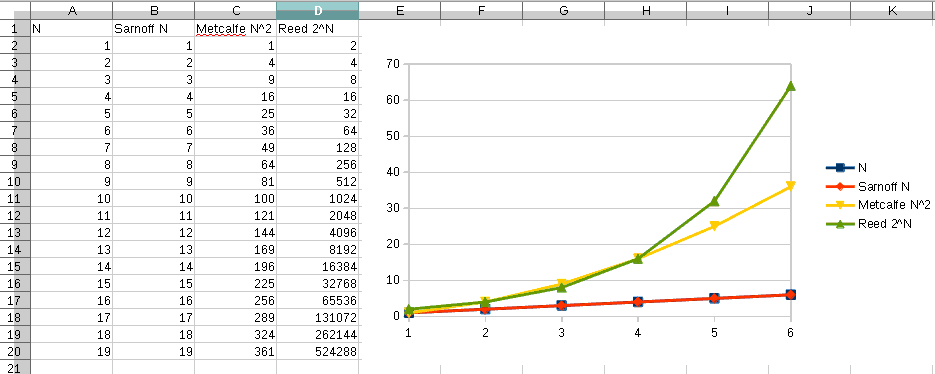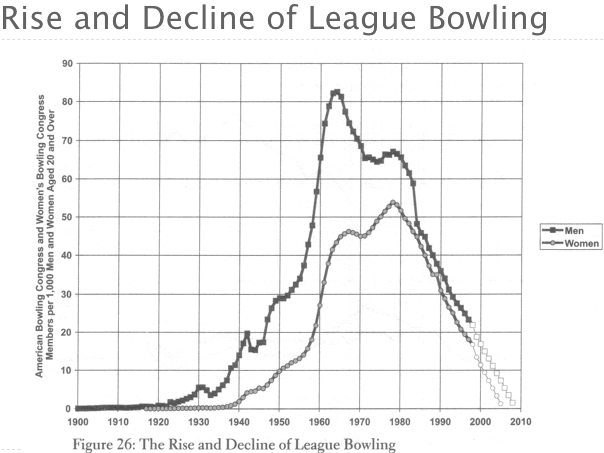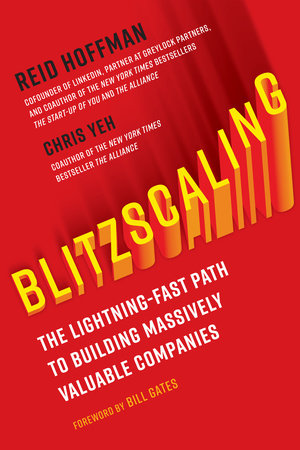Social has a shape
Joseph Reagle
Networks
Networks have structures, and structures influence the way individuals and networks behave. (Rheingold 2012, “Net Smart”, p. 191)
social media == social network?
Network shapes
Wikispeedia
Which do you want to play?!
Strength of Weak Ties
Mark Granovetter
Kidney chains
° of seperation
egs of small world?
- Eve R: yet we are polarized
Implications?
- develop “strong” and “weak” ties
- be a “bridge” between networks to fill “structural holes”
Pareto principle
In 1906 Vilfredo Pareto noted 80% of the land in Italy was owned by 20% of the population.
In small world networks, a few “super” nodes carry have most of the connections.
egs of 80/20?
- 80% of business is from 20% of clients
- …
Sturgeon’s law 😉
90 percent of everything is crap.
Long tail
⇐ fat head: 80% of sales in top 20% (e.g., Barnes & Nobles)
⇒ long tail: 20% of sales are in lesser 80% (e.g., Amazon)
egs of long tail?
Cases
COVID19 Overdispersion
“K The Overlooked Variable”
In an overdispersed regime, identifying transmission events (someone infected someone else) is more important than identifying infected individuals.
It’s not intellectually satisfying, but because of the overdispersion and its stochasticity, there may not be an explanation beyond that the worst-hit regions, at least initially, simply had a few unlucky early super-spreading events. (Tufekci 2020)
Obesity (2008)
Happiness (2008)
part of your happiness might depend on people you never met (Rheingold 2012, “Net Smart”, p. 198)
Happiness is “clumpy” in social networks, why?
- random (beware of clustering illusion)
- homophilly (e.g., happy people like each other)
- confounding variable (e.g., wealthy people are friends and happier)
- causal/contagious
Not just association
Longitudinal statistical models [of 4739 people from 1983–2003] suggest that clusters of happiness result from the spread of happiness and not just a tendency for people to associate with [the] similar
A friend who lives within a mile … and who becomes happy increases the probability that a person is happy by 25%. (FowlerChristakis 2008)
Is happiness really contagious? (2018)
Value of networks
How the whole is greater than the sum of its parts.
Sarnoff’s law
The value of (broadcast) network is proportional to the number of viewers: N.
Content is king.
David Sarnoff was head of RCA and NBC.
Metcalfe’s law
The value of (telecommunications) networks is proportional to the number of potential connections/transactions: N2. It’s quadratic.
(Actually, n*((n-1)/2), but don’t worry about that.)
Robert Metcalfe created ethernet and co-founded 3Com.
Reed’s law
The value of (social) networks is proportional to the number of possible groups/affiliations: 2N. It’s exponential.
David Reed worked on TCP/IP and UDP.
Network value??
| 2 | 8 | 16 | |
|---|---|---|---|
| Sarnoff (N) | |||
| Metcalfe (N2) | |||
| Reed (2N) |
Network value
| 2 | 8 | 16 | |
|---|---|---|---|
| Sarnoff (N) | 2 | 8 | 16 |
| Metcalfe (N2) | 4 | 64 | 256 |
| Reed (2N) | 4 | 256 | 65536 |
mnemonic??
Network Laws

Implications for social media startups??
- In a new market, you need to grow and acquire users fast.
- In an existing market, it’s hard to displace incumbents.
The problem with blitscaling
these businesses depend on network effects… [which] involves raising lots of capital and moving quickly to dominate a new market, even when … [they] may not know how they are going to make money in the long term.
The goal for Lyft and Uber—and for all the entrepreneurs being urged to blitzscale—should be to make their companies more sustainable, not just more explosive; more equitable, not more extractive. (OReilly 2019)
Immaterial capital
Types of capital
- economic capital
- financial assets, perhaps accumulated from one’s labor
- cultural capital
- holding of cultural values, habits, and tastes (e.g., speech and dress)
- social capital
- value of one’s social network
- symbolic capital
- related to the honor and recognition of the individual.
Bowling alone?

Networked individualism 1
Networked individuals have partial membership in multiple networks and rely less on permanent memberships in settled groups. (RainieWellman 2012, “Network”, p. 12)
Networked individualism 2
- Relationships are both local and long-distance.
- Personal networks are sparsely knit but include niche groups.
- Relationships are more easily formed and disbanded.
- While homophily exists, many relationships with people from different social backgrounds.
- Some social ties are strong, but many are weak. (BoaseWellman 2006)
Conclusion
Wrap up
Write down the most complex or confusing topic that you would like more clarity on.
Review
Review quiz
| Value | Meaning | Application | |
|---|---|---|---|
| Sarnoff | N | nodes | broadcast |
| Metcalfe | N2 | connections | network |
| Reed | 2N | groups | social media |
- Vilfredo Pareto said ___ of the land was owned by ___ of the people.
- What did Robert Putnam say about bowling in American?
- List 3 attributes of networked individualism.
- Pierre Bourdieu wrote that our education corresponds to {symbolic, cultural, social, economic} capital.
- What is one (of four) reasons happiness might be clumpy in social networks?
- What does “blitz-scaling” imply for start-ups and incumbents?
- What was odd about the way COVID-19 spread?



Social capital
The benefits of networks of trust and expectations of reciprocity.